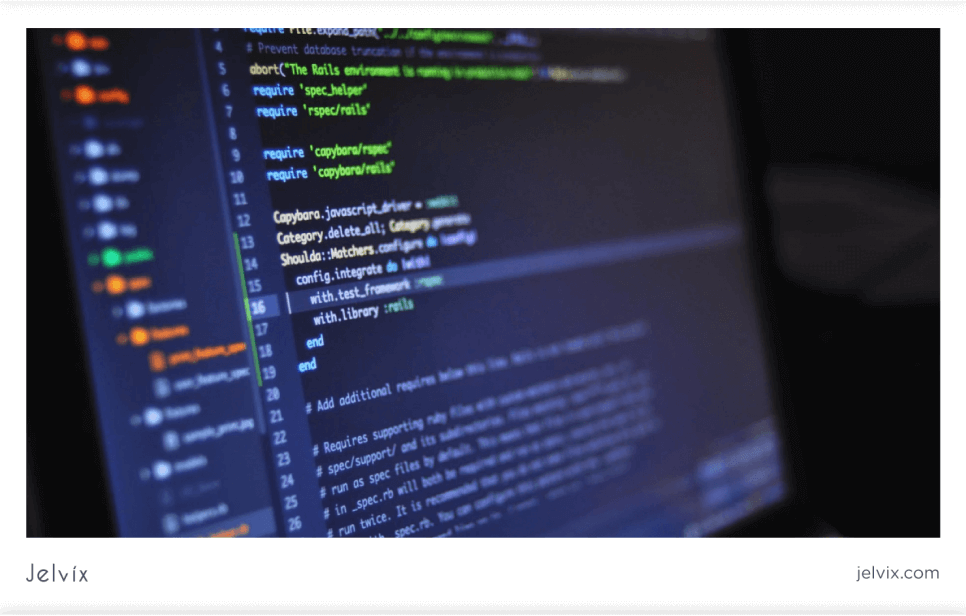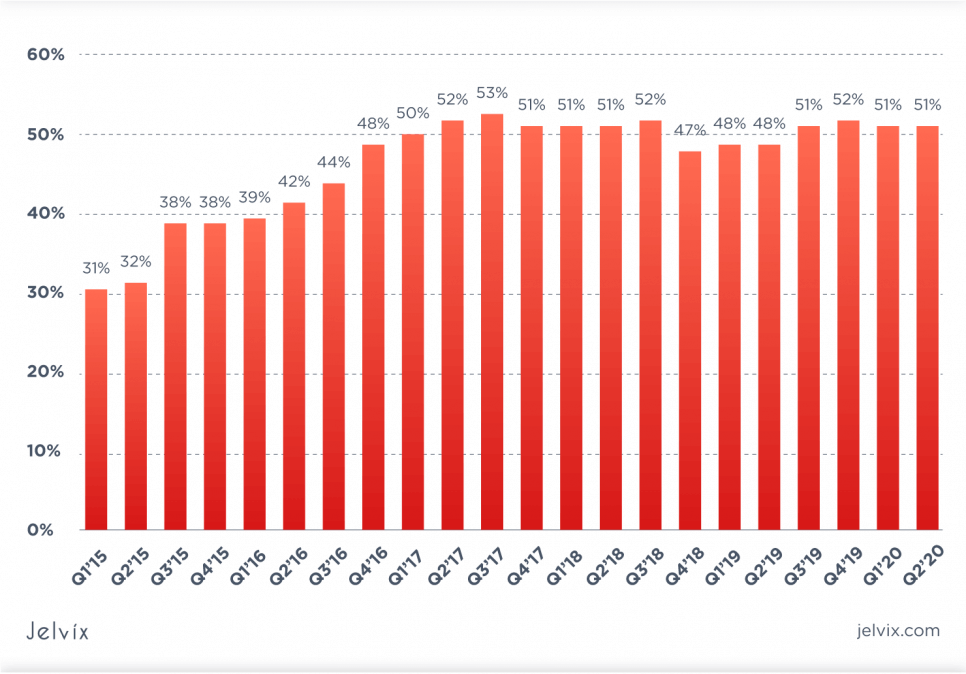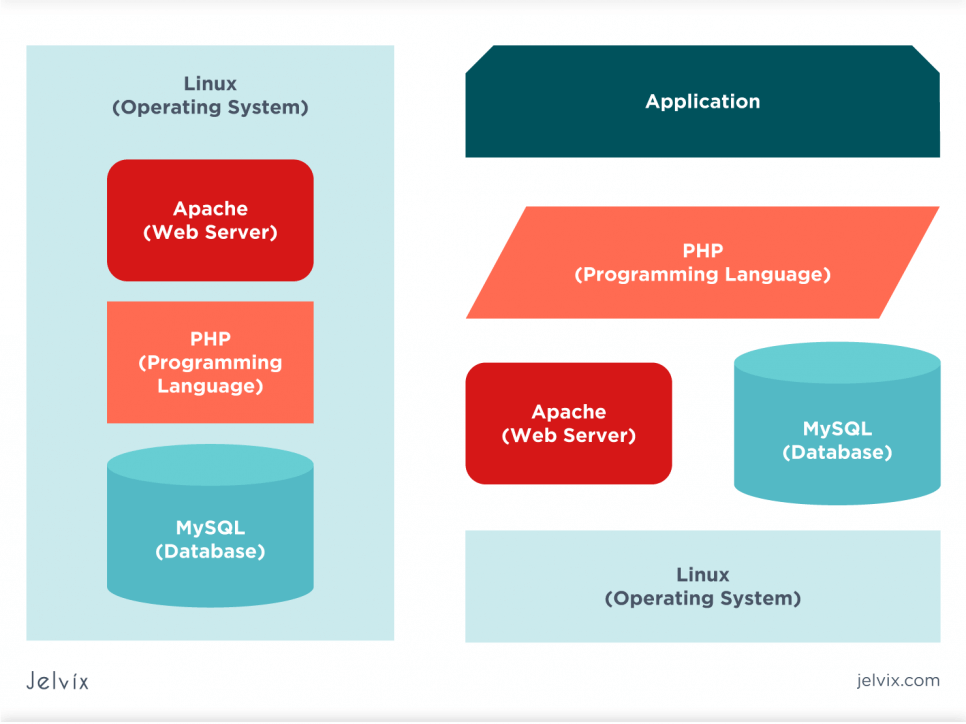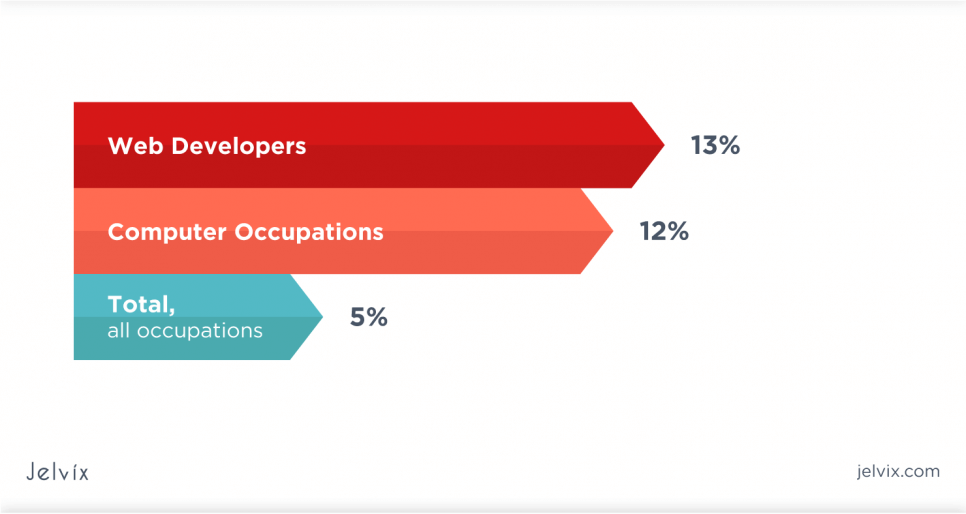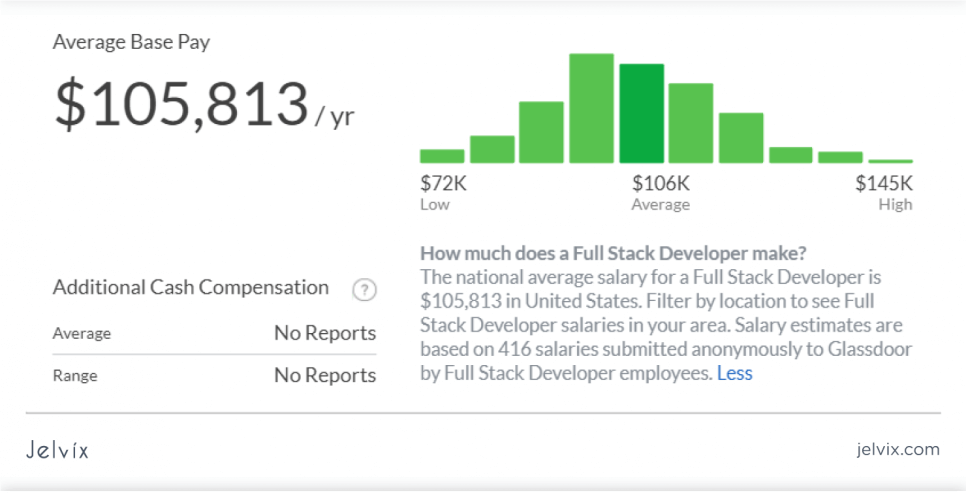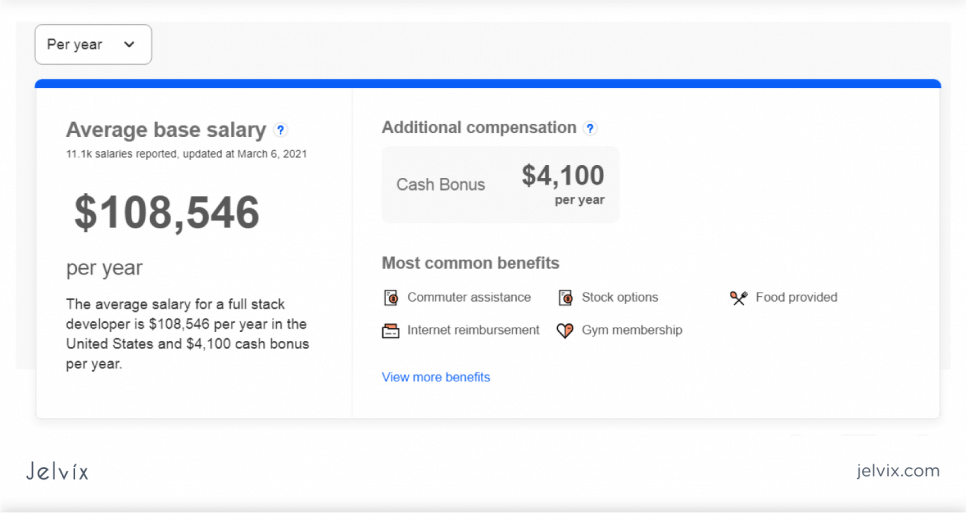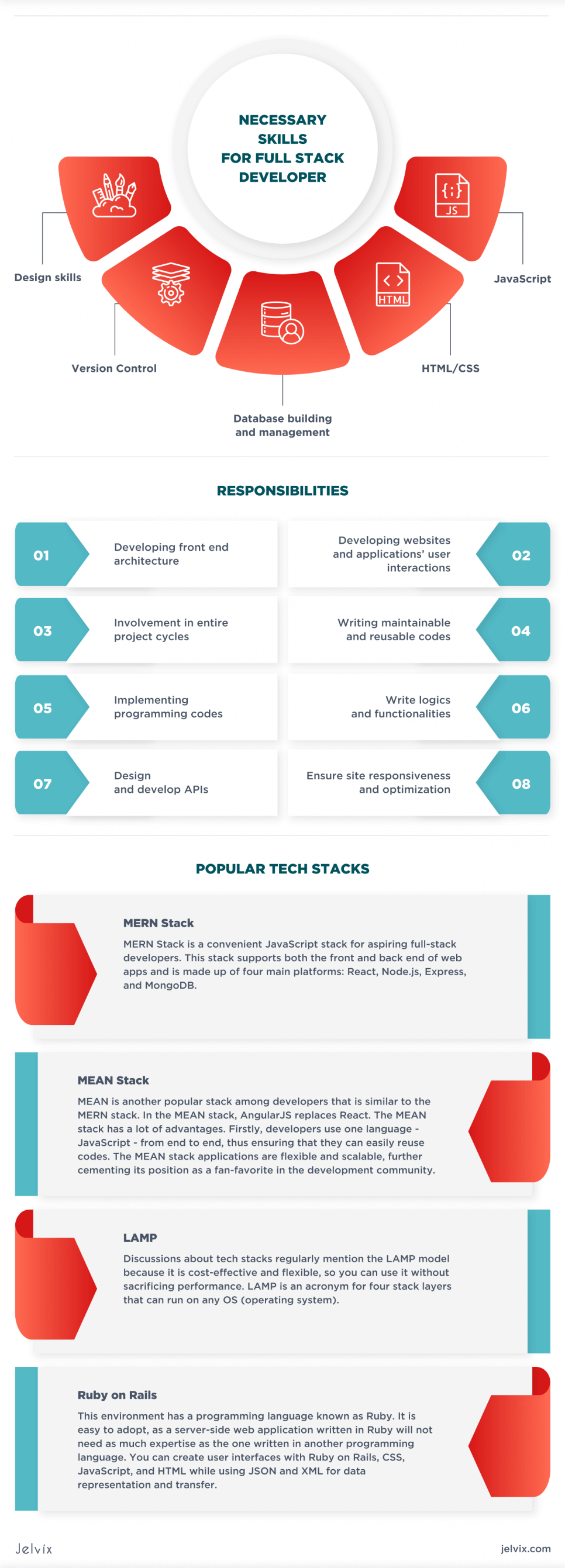Not too long ago, it was easy to spot the difference between a web designer and a web developer. The roles used to be distinct, and professionals honed in on their crafts on either side of the divide. Nowadays, the lines have become so intertwined due to the ever-increasing options that other jobs have been created to handle multiple responsibilities.
One of these jobs has to do with full-stack development. This highly specific role is gaining popularity as more and more developers tend to apply for this role. But what is full-stack development, who are the professionals in the field, and what do they offer the world of artificial intelligence and codes?
This article will discuss full-stack developers’ skills and how important they are for aspiring full-stack developers to learn.
What is Full-Stack Development?
A typical web or mobile development project would normally require the skills of a front-end developer and a back-end developer. But if the same person handles the responsibilities of both positions, they work on full-stack development.
Hence, full-stack development refers to the work process whereby one individual creates the front end (visual part) and the back end (server-side) of a web app or website.
Therefore, professionals who have mastered the skills for building both the back and front end of a web app are full-stack developers. They are proficient in the languages and frameworks of web development. Full-stack developers are also skilled in servers, hosting environments, and networks and may even communicate directly with clients during project planning.
For a robust career in full-stack development, professionals should have specialization in at least one backend programming language. Aspiring full-stack developers may opt for PHP, JavaScript, Python, or Ruby on Rails initially.
However, as they grow into their role, they can start working with more than one language. This will ensure that they stay relevant in the industry and build the capacity to take on more projects down the line.
Skills Required to Become a Full-Stack Developer
A full-stack developer holds a lot of power in a team of web developers. Their opinion is indispensable as the success of entire projects could depend on them. Due to the dynamic nature of the role, many full-stack developers have started to take on client-facing responsibilities. This ability to wear multiple hats eventually helps them rise quickly into higher positions in a company.
There are many other perks associated with this position. But before you start submitting your resume for full-stack developer jobs, you need to build the skills required for success in this role. Some of the required skills are:
Design Skills
Since full-stack developers have to build the front end of websites and applications, they need to improve their knowledge of design constantly. They have to stay updated on modern design trends to build the most appealing websites for their clients. No matter how well a site functions, its interface will play a great role in determining how often users visit it.
Full-stack developers should also learn how their job affects UI and UX and practice creating low-fidelity wireframes and prototypes for testing their ideas on the go. If you are looking to stand out, you should understand the design thinking process as many companies don’t integrate this approach in every step of product design.
Database Building and Management
Building and maintaining a database is a vital aspect of developing the back end of a web application. This database is so important because it collects data and allows it to be recovered when needed.
Notably, most full-stack developer jobs have to deal with managing the database of multiple web apps. To do this successfully, you will need to understand relational and non-relational data.
Any full-stack developer that knows their onions should also be skilled at building databases in a way that makes data retrieval easy. An intuitive database ensures that others can get the data needed with minimal guidance. This is important at times when the specialists are not available to retrieve such information themselves.
To excel in full-stack development, you should understand and learn how to manipulate database queries. You should also master the knowledge of web storage and have some experience working with XML and JSON.
HTML/CSS
One of the essential programming languages for building a web page is called the Hypertext Markup Language (HTML). It gives structural rigidity to any website. Other technologies generally define the look or functionality of a website’s pages, but HTML defines the meaning of web content. It also links sites and annotates site content.
Developers transfer data from the server to a client using HTML. The data sent into HTML input areas facilitates common tasks that users perform on websites, such as:
- Signing up
- Signing in
- Buying items
- Submitting product ratings and reviews
Full-stack developers will work with HTML in the context of various capacities and therefore need to understand the workings of this programming language. Irrespective of how much design knowledge they have, it is only when developers merge their knowledge of HTML with CSS skills that they can create an interactive and engaging front end.
Javascript
Another technology that any budding full-stack developer has to learn is Javascript. This scripting language adds the dynamism that makes websites much more than just digital text pages. Javascript also enables websites to move, automate processes, change, refresh, and react to users’ actions.
Learning Javascript will allow a front-end developer to integrate dynamic content like responsive graphics, browser games, and interactive forms on their web application. On the front end’s side, this will greatly improve the way an end-user interacts with the website and enhance the overall user experience (UX).
Knowing that Javascript is connected to many actions a user takes on websites, you can understand why full-stack developers need to master it.
Version Control
Version control refers to the tracking and managing changes that occur in computer programs, documents, directories of files. It helps several developers work on the same project simultaneously, irrespective of where they are. A developer can also work on a project on multiple computers using version control.
This skill is necessary for remote full-stack developers as it helps them manage project files. They can also access the history of a project’s progress and pick up from where they stopped in case they lose data or encounter computer crashes.
Development teams can choose between a centralized version control or a distributed one, with the significant difference between them being the number of repositories.
Some of the popular version controls are Git, Mercurial, and Subversion.
Full-stack Developers’ Responsibilities
A full-stack developer designs the user’s interactions on websites and writes codes for different platforms. They also create databases and servers that make websites tick. Their responsibilities can also vary depending on where they work.
Below are all responsibilities you can expect to see in a full-stack developer job description:
Developing Front-End Architecture
As a full-stack developer, you are expected to develop and update the front-end architecture regularly. The tools and processes required for this are meant to improve your front-end code and make the workflow more efficient.
The development of your front-end architecture is an indicator that you have grown past mere implementation right into creating and discovering problems, as well as solving them.
Developing Websites’ and Applications’ User Interactions
Full-stack developers will develop all interactions on the sites they have built. To do this, they need to keep up with modern UX standards within their industry and those of their clients since interaction design influences user experience considerably.
A full-stack developer’s goal is to build websites that are interactive. Even Jeff Bezos has invested heavily in Amazon’s UX over the years. All these prove that simple but appealing interaction designs are the best option.
Involvement in Entire Project Cycles
Full-stack developers are expected to take ownership and plan a website or application development project, from concept to implementation. This is because they are responsible for developing the front-end and back-end functionality. A full-stack developer will also work closely with a project manager and product manager to plan projects.
Wants to know more about Product Manager vs. Project Manager difference, read our ultimate guide.
Writing Maintainable and Reusable Codes
Today, many companies choose full-stack developers that can write reusable codes which is important for adaptability and continuity. Occasionally, teams face scenarios when another developer is required to continue the work of a full stack developer. Writing codes that can be easily maintained is critical for the success of a full-stack developer and their teams.
Implementing Programming Codes
A full-stack developer will also need to design, structure, and test programming codes. This responsibility requires mastery of the language syntax since most full-stack developer jobs require developers to know several programming languages.
Write Logics and Functionalities
Full-stack developers regularly have to write logics that guide user’s actions on their websites. These functionalities are linked with the database and can moderate the data being entered into that database. For example, a full-stack developer can create the logic that prevents users from uploading images above a given size into the database.
Design and Develop APIs
Full-stack developers are responsible for developing APIs that send or receive information. These APIs will be used to make specific actions, and if necessary, allow other websites to communicate with them to make defined actions too.
Ensure Site Responsiveness and Optimization
Full-stack developers make sure that the websites they build are fast and responsive. This responsibility involves making photos load quickly and reducing ad intrusiveness. Full-stack developers also ensure that their websites “fit” mobile devices since 66% of the global population own smartphones.
Which Tech Stacks are the Most Popular Among Full Stack Developers?
There are several tech stacks available out there. They make the digital products that we use today come alive, and whichever you choose will influence your website and app designs, functionality, and scalability. For clarity, a developer’s stack is any toolset, programming language, or library used hand-in-hand to develop websites and apps.
With efficiency and user-friendliness in mind, here are three popular tech stacks that your team can check out:
MERN Stack
MERN Stack is a convenient JavaScript stack for aspiring full-stack developers. This stack supports both the front and back end of web apps and is made up of four main platforms: React, Node.js, Express, and MongoDB. Here’s why full-stack developers need to learn how to use these platforms:
- React has a virtual Document Object Model that allows developers to tweak HTML visual elements. Therefore, full-stack developers skilled in React can create mobile OS applications (iOS and Android) with Javascript.
- Node.js allows developers to run code without access to an internet browser. This environment is convenient for developers, and they can easily download many open-source libraries for use.
- Express developers can execute back-end operations on this clean user interface. Learning to use it will help them interact with APIs and their servers better.
- MongoDB’s open-source nature has all sorts of advantages, including scalability, speed, and versatility. Full-stack developers need to work with this NoSQL database to manipulate databases in real-time.
MEAN Stack
MEAN is another popular stack among developers that is similar to the MERN stack. However, there is one major difference between the two. In the MEAN stack, AngularJS replaces React, which is why in their acronyms, R is replaced by A, while the rest remains unchanged.
The MEAN stack has a lot of advantages. Firstly, developers use one language – JavaScript – from end to end, thus ensuring that they can easily reuse codes. The MEAN stack applications are flexible and scalable, further cementing its position as a fan-favorite in the development community.
All MEAN stack technologies are open-source, so budding full-stack developers won’t have a hard time getting the tools they need.
LAMP
Discussions about tech stacks regularly mention the LAMP model because it is cost-effective and flexible, so you can use it without sacrificing performance. LAMP is an acronym for four stack layers that can run on any OS (operating system). These layers include the following:
- Linux: a popular operating system that receives requests from programs and relays them to the computer’s hardware.
- Apache: the most popular open-source web server that logs clients’ requests and responds to them (e.g., a user’s browser).
- MySQL: an open-source database service that allows users to manage relational databases using Structured Query Language (SQL).
- PHP: a widely-used scripting language embedded in HTML and used to develop static or dynamic websites or web apps, track sessions, and build e-commerce platforms.
Ruby on Rails
This environment has a programming language known as Ruby. It is easy to adopt, as a server-side web application written in Ruby will not need as much expertise as the one written in another programming language. You can create user interfaces with Ruby on Rails, CSS, JavaScript, and HTML while using JSON and XML for data representation and transfer.
When to Hire a Full Stack Developer
Full-stack developers are hot commodities in the software development industry for good reasons. Web development is one of the fastest-growing occupations in the US. The Bureau of Labor Statistics estimates that web developers will witness a 13% increase in the employment rate from 2018 to 2028.
With big tech companies hiring full-stack developers, you may start wondering whether to hire a full-stack developer. You need to hire one if:
- You have a limited budget for product development.
- You need someone to turn a minimum viable product into a fully functional product.
Before hiring professionals seeking full-stack developer jobs, you need to know how much you will have to pay them. An average full-stack web developer’s salary is not easy to estimate as their levels of expertise and skillsets differ.
According to data from Glassdoor and Indeed, an average full-stack developer earns between $105K and $108K annually. Full-stack developers in the United States with 5 years of experience can earn up to $131k yearly.
Depending on the city, the salary range could be significantly higher, with full-stack developers earning as much as $152K in places like San Fransisco.
The Bottom Line
The role of full-stack developers is as dynamic as it is interesting. Many companies recruit these professionals to control various aspects of their projects.
If you consider the value they bring to the table relative to how much they are paid, it’s easy to see why they are so highly sought after. And the best part — full-stack development isn’t reserved for those with a college degree.
Starting a career in full-stack development may seem a bit confusing. Hundreds of introductory videos, boot camps, online courses, and blog posts could confuse you and help you at the same time. Using user-friendly tech stacks, adopting the skills discussed, and learning the programming languages in demand are effective ways to develop yourself as a full-stack developer.
This article was written and edited by Amanda Dudley, an academic writer and a lecturer with a PhD in History from Stanford University. She is fluent in the English and German languages. She occasionally provides students with a top-notch essay writing service that helps them succeed in school.
Need a qualified full-stack developer?
Jelvix offers the Top 5% of Full-Stack Developers and Coders.






